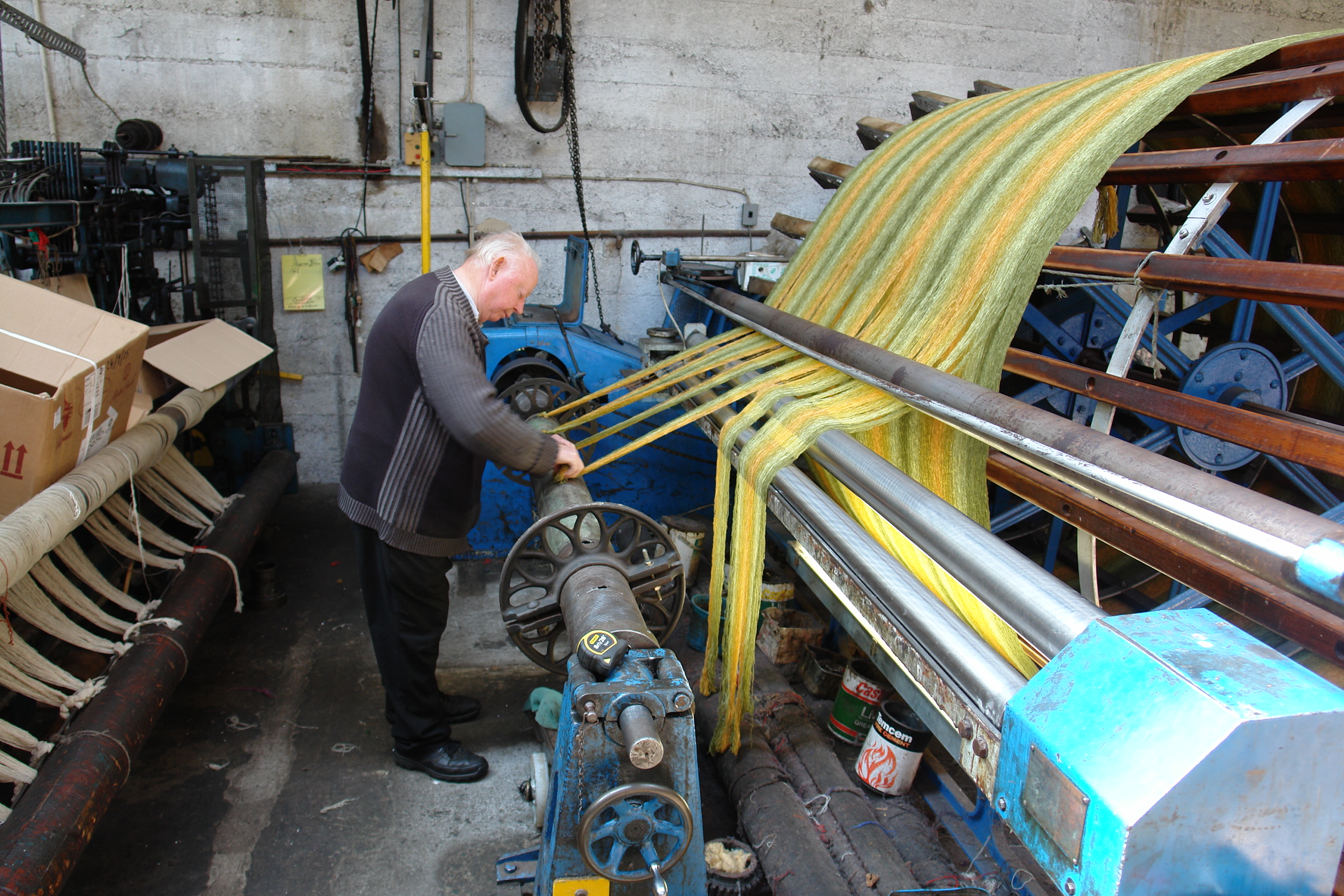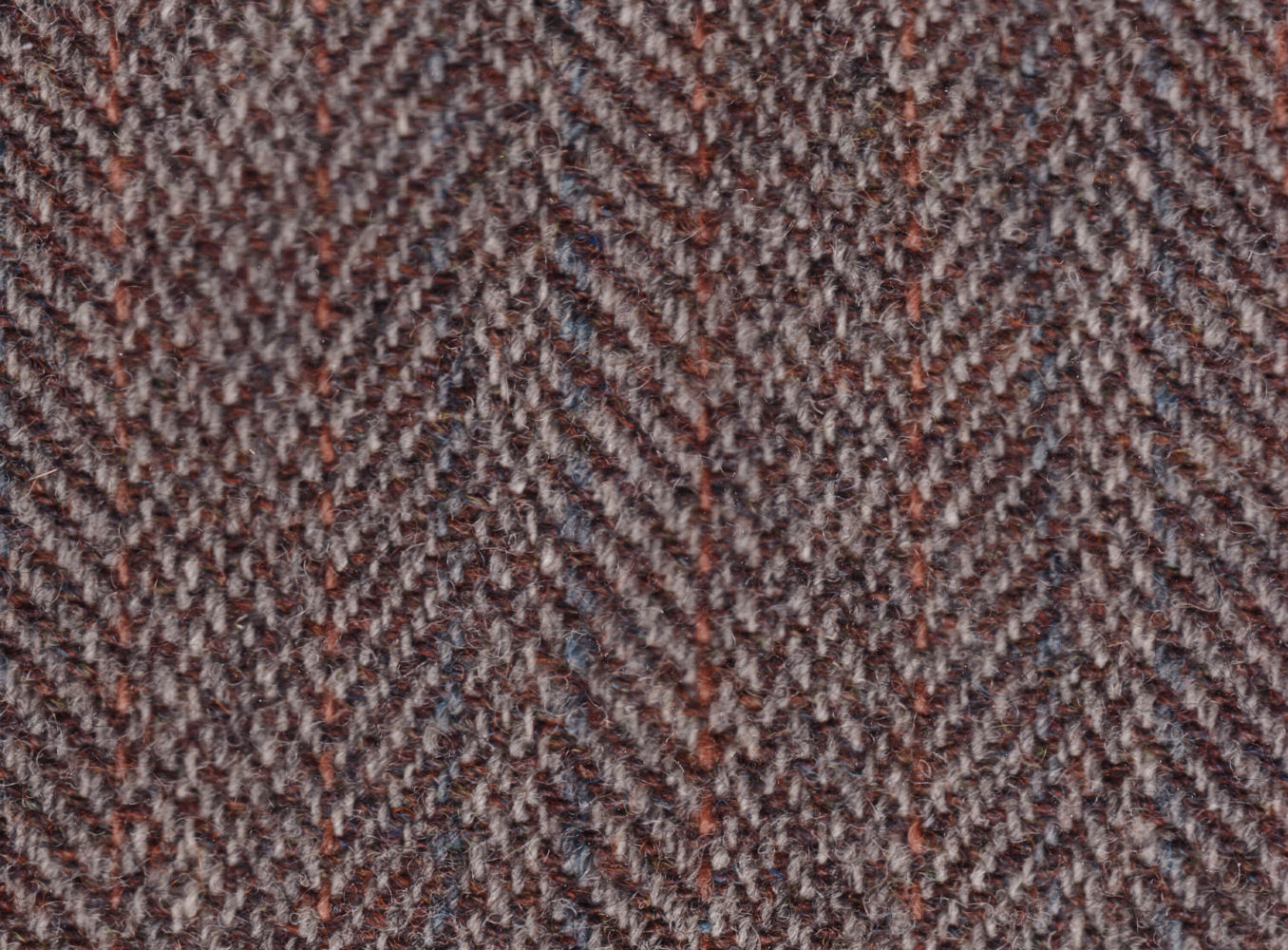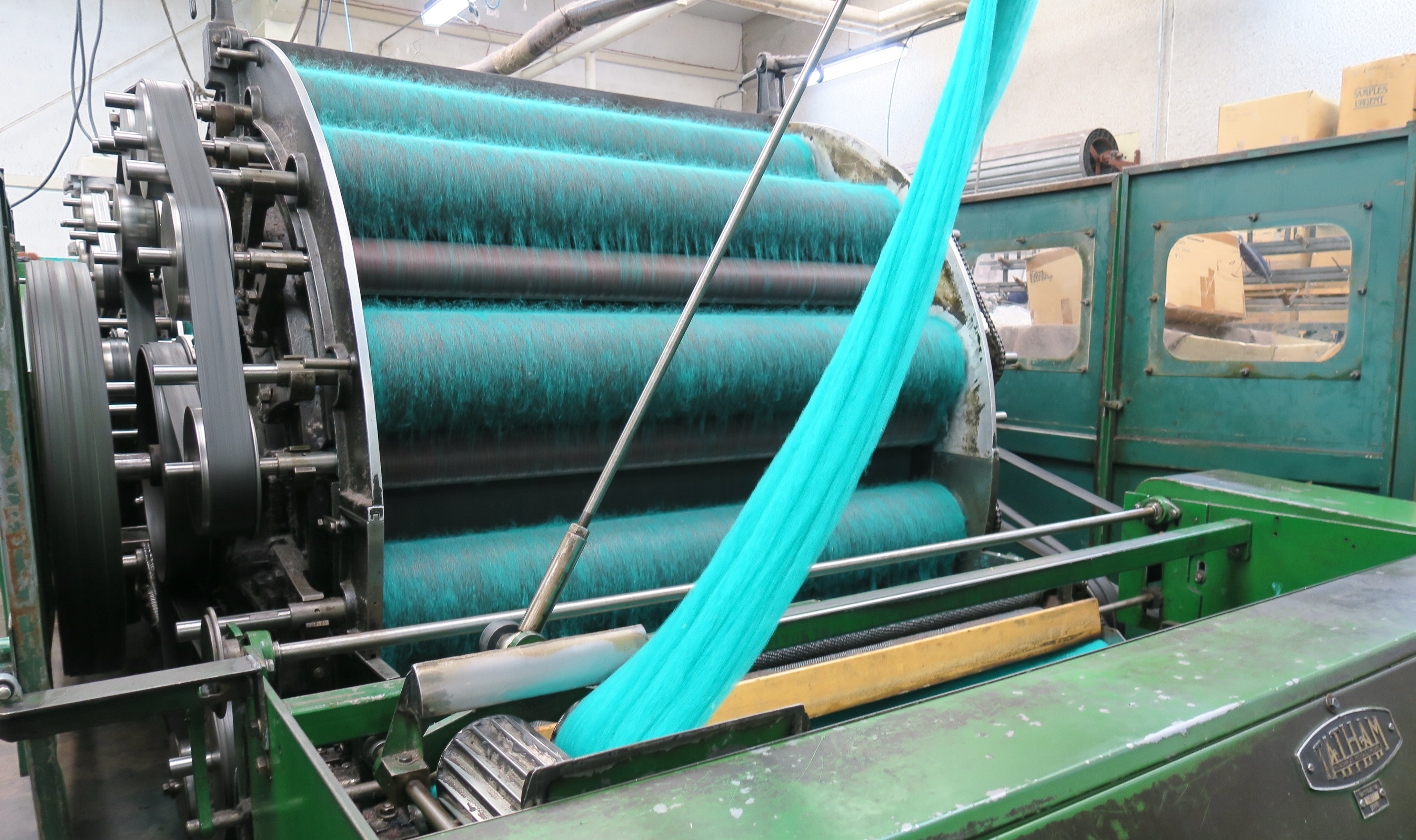|
Kerry Woollen Mills
Kerry Woollen Mills are historic wool mills based just off the Ring of Kerry. History Kerry Woollen Mills are one of the last remaining traditional wool mills still manufacturing in County Kerry. The company was founded over 300 years ago. The mill's machinery was originally driven by the River Gweestin, and its water was also used for washing and dying the wool. The mill was run by the Sealy family for many generations since its inception in 1760, and brought into the capable hands of the Eadie family in 1904, who had gained experience in the wool manufacturing business for many years in Fermanagh and Scotland and are now successfully managing the mill in the fourth generation. Wool is spun, dyed and woven on the premises at the back of a well-stocked showroom, where yarns and the finished products are displayed. The mill is set in a rural location with many of historic buildings still being used. The machinery is a successful blend of the traditional and modern, having bee ... [...More Info...] [...Related Items...] OR: [Wikipedia] [Google] [Baidu] |
Kerry Woollen Mills 15
Kerry or Kerri may refer to: * Kerry (name), a given name and surname of Gaelic origin (including a list of people with the name) Places * Kerry, Queensland, Australia * County Kerry, Ireland ** Kerry Airport, an international airport in County Kerry, Ireland * Kerry, Powys, Wales, UK * Kerry quarter, Cambridge, Massachusetts, US * Kerry Park, Seattle, Washington, US Brands and enterprises * Kerry Group, a food company in Ireland * Kerry Media, a newspaper and publications group * Kerry Properties, a property developer in Hong Kong Constituencies *Kerry (Dáil constituency) *Kerry (Parliament of Ireland constituency) *Kerry (UK Parliament constituency) Other uses * Earl of Kerry, an ancient title in the Peerage of Ireland * Kerry GAA, a governing body of Gaelic games in County Kerry * Kerry F.C. (other), two unrelated football teams * Kerry, a front end for Beagle desktop search software See also * Ceri (other) * Kelley (other) * Kelly (disamb ... [...More Info...] [...Related Items...] OR: [Wikipedia] [Google] [Baidu] |
Weaving
Weaving is a method of textile production in which two distinct sets of yarns or threads are interlaced at right angles to form a fabric or cloth. Other methods are knitting, crocheting, felting, and braiding or plaiting. The longitudinal threads are called the warp and the lateral threads are the weft, woof, or filling. (''Weft'' is an Old English word meaning "that which is woven"; compare ''leave'' and ''left''.) The method in which these threads are interwoven affects the characteristics of the cloth. Cloth is usually woven on a loom, a device that holds the warp threads in place while filling threads are woven through them. A fabric band that meets this definition of cloth (warp threads with a weft thread winding between) can also be made using other methods, including tablet weaving, back strap loom, or other techniques that can be done without looms. The way the warp and filling threads interlace with each other is called the weave. The majority of woven products a ... [...More Info...] [...Related Items...] OR: [Wikipedia] [Google] [Baidu] |
Carpet
A carpet is a textile floor covering typically consisting of an upper layer of pile attached to a backing. The pile was traditionally made from wool, but since the 20th century synthetic fibers such as polypropylene, nylon, or polyester have often been used, as these fibers are less expensive than wool. The pile usually consists of twisted tufts that are typically heat-treated to maintain their structure. The term ''carpet'' is often used in a similar context to the term ''rug'', but rugs are typically considered to be smaller than a room and not attached to the floor. Carpets are used for a variety of purposes, including insulating a person's feet from a cold tile or concrete floor, making a room more comfortable as a place to sit on the floor (e.g., when playing with children or as a prayer rug), reducing sound from walking (particularly in apartment buildings), and adding decoration or color to a room. Carpets can be made in any color by using differently dyed fibers. C ... [...More Info...] [...Related Items...] OR: [Wikipedia] [Google] [Baidu] |
Blanket
A blanket is a swath of soft cloth large enough either to cover or to enfold most of the user's body and thick enough to keep the body warm by trapping radiant body heat that otherwise would be lost through convection. Etymology The term arose from the generalization of a specific fabric called ''Blanket fabric'', a heavily napped woolen weave pioneered by Thomas Blanket (Blanquette), a Flemish weaver who lived in Bristol, England, in the 14th century. Earlier usage of the term is possible through its derivation from the French word for white: . According to the Oxford English Dictionary, the word was used a noun as long ago as the 14th century. William Shakespeare is recognised as the first person to use the verb ''blanket'', meaning to 'cover with or as with a blanket'. In the play ''King Lear'', published in 1608, the character Edgar says: "My face ile grime with filth, Blanket my loynes, else all my haire with knots." History An ancient form of blanket is recor ... [...More Info...] [...Related Items...] OR: [Wikipedia] [Google] [Baidu] |
Tweed (cloth)
Tweed is a rough, woollen fabric, of a soft, open, flexible texture, resembling cheviot or homespun, but more closely woven. It is usually woven with a plain weave, twill or herringbone structure. Colour effects in the yarn may be obtained by mixing dyed wool before it is spun. Tweeds are an icon of traditional Scottish, Irish, Welsh and English clothing, being desirable for informal outerwear, due to the material being moisture-resistant and durable. Tweeds are made to withstand harsh climates and are commonly worn for outdoor activities such as shooting and hunting, in England, Wales, Ireland and Scotland. In Ireland, tweed manufacturing is now most associated with County Donegal but originally covered the whole country. In Scotland, tweed manufacturing is most associated with the Isle of Harris in the Hebrides. Etymology The original name of the cloth was ''tweel'', Scots for twill, the material being woven in a twilled rather than a plain pattern. A traditional story ... [...More Info...] [...Related Items...] OR: [Wikipedia] [Google] [Baidu] |
Shawl
A shawl (from fa, شال ''shāl'',) is a simple item of clothing from Kashmir, loosely worn over the shoulders, upper body and arms, and sometimes also over the head. It is usually a rectangular or square piece of cloth, which is often folded to make a triangle, but can also be triangular in shape. Other shapes include oblong shawls. History The words "shawl" and "pashmina" come from Kashmir, the northern region of the Indian subcontinent. Sources report cashmere crafts were introduced by Sayeed Ali Hamadani who was an Iranian scholar when he came to Kashmir in the 14th century. He found that the Ladakhi Kashmiri goats produced soft wool. He took some of this goat wool and made socks which he gave as a gift to the king of Kashmir, Sultan Qutbuddin. Afterwards, Hamadani suggested to the king that they start a shawl weaving industry in Kashmir using this wool. That is how pashmina shawls began. The United Nations agency UNESCO reported in 2014 that Ali Hamadani was one of the ... [...More Info...] [...Related Items...] OR: [Wikipedia] [Google] [Baidu] |
Scarf
A scarf, plural ''scarves'', is a piece of fabric worn around the neck or head for warmth, sun protection, cleanliness, fashion, religious reasons, or used to show the support for a sports club or team. They can be made in a variety of different materials such as wool, linen, silk or cotton. It is a common type of neckwear. History Scarves have been worn since ancient times. In 1350BC Ancient Egypt, Queen Nefertiti is said to have worn a tightly-woven headscarf, and the Statue of Ashurnasirpal II from the 9th century BC features the emperor wearing a shawl. In Ancient Rome, the garment was used to keep clean rather than warm. It was called a focale or ''sudarium'' (sudarium from the Latin for "sweat cloth"), and was used to wipe the sweat from the neck and face in hot weather. They were originally worn by men around their neck or tied to their belt. Historians believe that during the reign of the Chinese Emperor Cheng, scarves made of cloth were used to identify officers ... [...More Info...] [...Related Items...] OR: [Wikipedia] [Google] [Baidu] |
Finishing (textiles)
In textile manufacturing, finishing refers to the processes that convert the woven or knitted cloth into a usable material and more specifically to any process performed after dyeing the yarn or fabric to improve the look, performance, or "hand" (feel) of the finish textile or clothing. The precise meaning depends on context. Fabric after leaving the loom or knitting machine is not readily useable. Called grey cloth at this stage, it contains natural and added impurities. Sometimes it is also processed at fiber or yarn stages of textile manufacturing. Grey fiber or yarn or fabric goes through a series of processes such as wet processing and finishing. Finishing is a broad range of physical and chemical treatments that complete one stage of textile manufacturing and may prepare for the next step, making the product more receptive to the next stage of manufacturing. Finishing adds value to the product and makes it more attractive, useful, and functional for the end-user. Improvi ... [...More Info...] [...Related Items...] OR: [Wikipedia] [Google] [Baidu] |
Spinning (textiles)
Spinning is a twisting technique to form yarn from fibers. The fiber intended is drawn out, twisted, and wound onto a bobbin. A few popular fibers that are spun into yarn other than cotton, which is the most popular, are viscose (the most common form of rayon), and synthetic polyester. Originally done by hand using a spindle whorl, starting in the 500s AD the spinning wheel became the predominant spinning tool across Asia and Europe. The spinning jenny and spinning mule, invented in the late 1700s, made mechanical spinning far more efficient than spinning by hand, and especially made cotton manufacturing one of the most important industries of the Industrial Revolution. Process The yarn issuing from the drafting rollers passes through a thread-guide, round a Ring spinning#How it works, traveller that is free to rotate around a ring, and then onto a tube or bobbin, which is carried on to a Spindle (textiles), spindle, the axis of which passes through a center of the ring. The spin ... [...More Info...] [...Related Items...] OR: [Wikipedia] [Google] [Baidu] |
Kerry Woollen Mills 16
Kerry or Kerri may refer to: * Kerry (name), a given name and surname of Gaelic origin (including a list of people with the name) Places * Kerry, Queensland, Australia * County Kerry, Ireland ** Kerry Airport, an international airport in County Kerry, Ireland * Kerry, Powys, Wales, UK * Kerry quarter, Cambridge, Massachusetts, US * Kerry Park, Seattle, Washington, US Brands and enterprises * Kerry Group, a food company in Ireland * Kerry Media, a newspaper and publications group * Kerry Properties, a property developer in Hong Kong Constituencies *Kerry (Dáil constituency) *Kerry (Parliament of Ireland constituency) *Kerry (UK Parliament constituency) Other uses * Earl of Kerry, an ancient title in the Peerage of Ireland * Kerry GAA, a governing body of Gaelic games in County Kerry * Kerry F.C. (other), two unrelated football teams * Kerry, a front end for Beagle desktop search software See also * Ceri (other) * Kelley (other) * Kelly (disamb ... [...More Info...] [...Related Items...] OR: [Wikipedia] [Google] [Baidu] |
Carding
Carding is a mechanical process that disentangles, cleans and intermixes fibres to produce a continuous web or sliver (textiles), sliver suitable for subsequent processing. This is achieved by passing the fibres between differentially moving surfaces covered with "card clothing", a firm flexible material embedded with metal pins. It breaks up locks and unorganised clumps of fibre and then aligns the individual fibres to be parallel with each other. In preparing wool fibre for spinning, carding is the step that comes after teasing. The word is derived from the Latin meaning thistle or Dipsacus, teasel, as dried vegetable teasels were first used to comb the raw wool before technological advances led to the use of machines. Overview These ordered fibres can then be passed on to other processes that are specific to the desired end use of the fibre: Cotton mill, Cotton, Batting (material), batting, felt, woollen or worsted yarn, etc. Carding can also be used to create blends of dif ... [...More Info...] [...Related Items...] OR: [Wikipedia] [Google] [Baidu] |
Scotland
Scotland (, ) is a country that is part of the United Kingdom. Covering the northern third of the island of Great Britain, mainland Scotland has a border with England to the southeast and is otherwise surrounded by the Atlantic Ocean to the north and west, the North Sea to the northeast and east, and the Irish Sea to the south. It also contains more than 790 islands, principally in the archipelagos of the Hebrides and the Northern Isles. Most of the population, including the capital Edinburgh, is concentrated in the Central Belt—the plain between the Scottish Highlands and the Southern Uplands—in the Scottish Lowlands. Scotland is divided into 32 administrative subdivisions or local authorities, known as council areas. Glasgow City is the largest council area in terms of population, with Highland being the largest in terms of area. Limited self-governing power, covering matters such as education, social services and roads and transportation, is devolved from the Scott ... [...More Info...] [...Related Items...] OR: [Wikipedia] [Google] [Baidu] |









